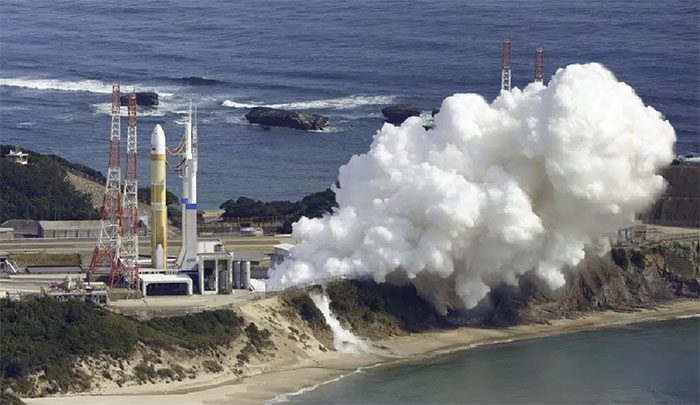Japan may have to postpone the launch of its Phobos lunar probe to 2026 due to issues related to its latest H3 rocket. This could impact the competition between Japan, the United States, Europe, and China to become the first nation to explore the moons of Mars.

Smoke rising from the launch pad of the H3 rocket at the Tanegashima Space Center in Kagoshima Prefecture, Japan on February 17, 2023. (Photo credit: Kyodo/TTXVN)
According to a source familiar with Japan’s Mars Moons Exploration (MMX) project, the original plan was to launch the probe in September 2024, with the spacecraft expected to reach the Mars system around August 2025. It would then land on Phobos to collect surface samples and return to Earth by approximately 2029. Japan intended to broadcast detailed images of the spacecraft’s activities in the Mars system to the World Expo 2025 venue in Osaka, marking the country’s first exploration of the Martian moon’s surface.
Due to the constantly changing distance between Mars and Earth, the optimal launch window is around September 2024. If it cannot be executed in September 2024, the next suitable window will be in 2026. However, this schedule may continue to be disrupted due to prioritizing other more important launches.
Sources indicate that the timing of the MMX mission deployment heavily relies on the results of the second launch of the H3 rocket, which is scheduled for March 2024 after necessary adjustments to payload and improvements to address issues that caused the first launch failure in March this year. Additionally, the Japanese government is also considering using a rocket from SpaceX (USA) instead of the H3. However, this option would also not be feasible before the 2024 deadline. Therefore, it is likely that Japan’s plan to showcase its aerospace industry at Expo 2025 will not materialize.
Phobos is a natural satellite believed to have accumulated rocks originating from Mars. Consequently, scientists are hopeful that the analysis of samples collected from the surface of Phobos will shed light on the formation and development processes of the Mars system. Besides Phobos, the other moon of Mars is called Deimos, with diameters of 22 km and 12.4 km, respectively.


















































